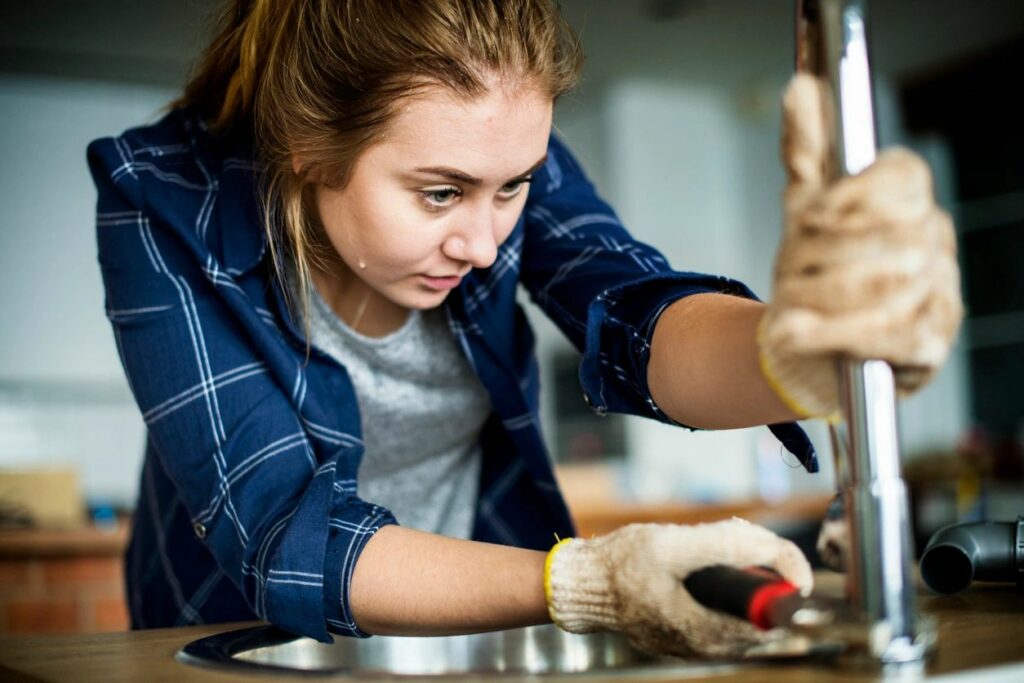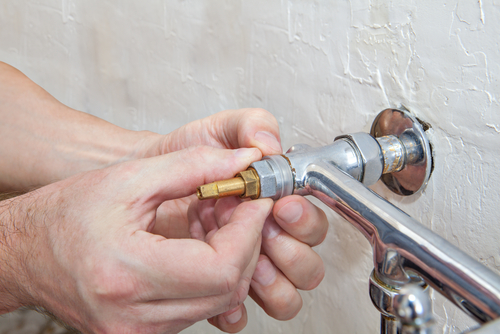Reasons Why It's Vital to Fix a Malfunctioning Faucet
Reasons Why It's Vital to Fix a Malfunctioning Faucet
Blog Article
The article author is making a few good pointers related to Should I Repair or Replace a Leaky Faucet? as a whole in the content below.

Trickling faucets may feel like a minor trouble, however their effect goes beyond simply the inconvenience of the noise. From drainage to sustaining unneeded financial costs and health and wellness threats, overlooking a leaking tap can cause numerous effects. In this post, we'll look into why it's crucial to address this common home issue quickly and effectively.
Wastage of Water
Environmental Impact
Leaking faucets contribute considerably to water wastefulness. According to the Epa (EPA), a single tap trickling at one drip per second can lose greater than 3,000 gallons of water per year. This not only stress water sources but likewise impacts ecosystems and wild animals based on them.
Financial Costs
Boosted Water Bills
Past the ecological influence, leaking faucets can blow up water expenses substantially. The gathered waste over time converts into greater energy expenditures, which might have been stayed clear of with timely repairs.
Possible Residential Property Damage
In addition, prolonged trickling can lead to damage to fixtures and surface areas bordering the faucet. Water buildup can cause staining, rust, and even structural problems if left ignored, causing added repair prices.
Health and wellness Issues
Mold and Mold Growth
The constant existence of dampness from a dripping tap develops an ideal environment for mold and mold development. These fungis not only compromise indoor air high quality yet additionally position health and wellness threats, specifically for people with breathing problems or allergic reactions.
Waterborne Illness
Stagnant water in dripping faucets can become a breeding place for bacteria and other microorganisms, boosting the danger of waterborne diseases. Impurities such as Legionella germs thrive in stationary water, possibly causing significant illnesses when ingested or breathed in.
DIY vs. Expert Repair
Pros and Cons of Do It Yourself Repair Service
While some might attempt to deal with a trickling faucet themselves, DIY repair services include their own collection of difficulties. Without appropriate expertise and tools, DIY efforts can exacerbate the problem or result in insufficient repairs, lengthening the issue.
Benefits of Hiring a Specialist Plumber
Employing an expert plumber guarantees that the underlying cause of the leaking faucet is resolved efficiently. Plumbing technicians have the know-how and equipment to identify and repair faucet concerns efficiently, saving time and minimizing the danger of additional damages.
Step-by-Step Guide to Fixing a Dripping Tap
Tools Required
Prior to attempting to take care of a dripping tap, collect the required devices, including a flexible wrench, screwdrivers, replacement parts (such as washing machines or cartridges), and plumber's tape.
Common Faucet Issues and Their Solutions
Identify the type of faucet and the specific problem creating the drip. Typical issues consist of worn-out washers, rusty shutoff seats, or malfunctioning O-rings. Refer to maker directions or on the internet tutorials for step-by-step support on repairs.
Preventive Measures
Routine Maintenance Tips
To prevent leaking taps, execute routine upkeep such as cleaning aerators, examining for leaks, and replacing worn-out components without delay. In addition, take into consideration setting up water-saving gadgets or updating to a lot more reliable fixtures.
Significance of Prompt Repair Works
Resolving leaking taps as soon as they're discovered stops more water wastefulness and possible damage, eventually conserving both water and cash in the future.
Impact on Building Value
Understanding of Well-Maintained Building
Preserving a residential or commercial property in good condition, including attending to maintenance problems like dripping taps, boosts its regarded worth and desirability amongst possible purchasers or renters.
Impact on Resale Value
Properties with well-maintained plumbing fixtures, consisting of taps, command greater resale values in the property market. Dealing with trickling taps can contribute to a positive impact during residential or commercial property inspections and negotiations.
Environmental Obligation
Specific Contribution to Preservation
Taking duty for taking care of dripping faucets lines up with broader efforts toward water preservation and environmental sustainability. Every individual's actions jointly make a significant influence on protecting priceless sources.
Lasting Living Practices
By prioritizing punctual repair services and adopting water-saving practices, individuals add to sustainable living methods that profit both present and future generations.
Final thought
Dealing with a dripping tap surpasses mere benefit; it's a vital action towards saving water, minimizing financial expenses, and safeguarding health and wellness and home. Whether with do it yourself repairs or expert support, acting to repair dripping taps is a tiny yet impactful method to advertise responsible stewardship of resources and add to a much healthier, more sustainable future.
How to Fix a Leaky Faucet: Step-by-Step Repair Guide
A leaky faucet may seem like a simple annoyance, but if it's not fixed promptly, that leak could cost hundreds to potentially thousands. From water damage to mold, mildew, and high water bills, even a tiny leak can be catastrophic if left unattended. Damage like this can even affect the overall value of your home, so it's important to take the right approach for leaky faucet repair. You may need the help of a plumber in some cases, but we've got a few tips you can try on how to fix a leaky faucet before calling the pros.
Four Faucet Types
When you're learning how to fix a leaky faucet, the first step is knowing what kind of faucet you're working with! There are four common types.
Cartridge Faucets
Cartridge faucets come in one- or two-handled varieties. In one-handled cartridge faucets, hot and cold water combines in a single cartridge. In the two-handled versions, hot and cold water are controlled separately and mixed in the faucet.
Ball Faucets
Ball faucets have a single lever you push up and down to adjust the pressure and rotate to change the temperature. A slotted metal ball controls the amount of water allowed into the spout.
Compression Washer Faucets
They're the oldest type of faucet, but they're still used in many homes — especially older ones. Compression faucets have two separate handles that, when turned, raise or lower the washer that seals a water valve. This valve stops water from flowing through the faucet when it is turned off.
Disc Faucets
Disc faucets rarely need to be repaired due to their maintenance-free design. The water flow is controlled by two discs — the upper one raises and lowers against a fixed lower disc, creating a watertight seal. If your disc faucet starts leaking, you may need to replace the seals or clean residue buildup from the inlets.
Fixing a Leaky Faucet
Step 1: Turn Off the Water
Whether you're learning how to fix a leaky bathtub faucet or how to fix a leaky kitchen faucet, always turn off the water supply to your working area when you're fixing a leak. The last thing you want is a flood added to your list of things to fix.
Look for the shutoff valves below your sink or around the tub and turn them clockwise to stop the water flow. If your faucet doesn't have shutoff valves, you may need to turn off the water for the whole house. Check to make sure it's off by turning the faucet on. If nothing comes out, you're ready to start the repair.
Step 2: Take Apart the Faucet
How you disassemble your faucet depends on the type of fixture you have. You can use a flathead screwdriver to remove the caps on top of the handle or handles for cartridge and compression faucets. Inside, you should see handle screws. Unscrew these with a screwdriver to remove the handle.
Disc- and ball-style faucets will typically have an inlet screw near the handle, and removing that will reveal the interior of the faucet.
Detach the Valve Stem
For cartridge- and compression-style faucets, you'll see the inner valve stem or cartridge once you remove the faucet handles. If you have a compression faucet, unscrew the brass valve stem. If you have a cartridge faucet, pull out the cartridge. If your cartridge has been in place for a while, it may require some tools or extra force to remove it due to mineral deposits.
Examine and Replace Parts
Once you've removed the parts, check them out to confirm what needs to be replaced. You may see corroded rubber washers, O-rings, stems, or cartridges. On a ball-style faucet, check the seats and springs for damage.
If you need to repair a leaky disc faucet, check the inlet and seals on the lower disc.
Once you determine what parts must be replaced, visit your local hardware store. Bring the damaged parts with you to ensure you can purchase the correct components to replace them.
Clean Valves and Faucet Cavity
If you've removed a stem or cartridge, you may notice mineral buildup in the faucet's threads. Use white vinegar to clean the valve seat by soaking it for a few minutes, then scrub it away with a soft toothbrush and rinse with warm water. You can also clean the interior of the faucet in the same way.
Reassemble the Faucet
Once your faucet is cleaned and the required parts have been replaced, it's time to reassemble it. Put the pieces back together and slowly turn the water supply back on. Doing this slowly is crucial because too much initial water pressure can damage the new hardware you've just installed.
https://homewarranty.firstam.com/blog/how-to-fix-leaky-faucet

As a fervent reader about Leaky Faucets: Why They Happen & What to Do About Them, I was thinking sharing that excerpt was a great idea. Remember to take the time to share this entry if you enjoyed it. Thank-you for taking the time to read it.
Report this page